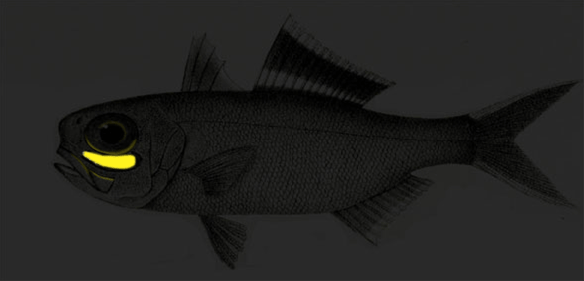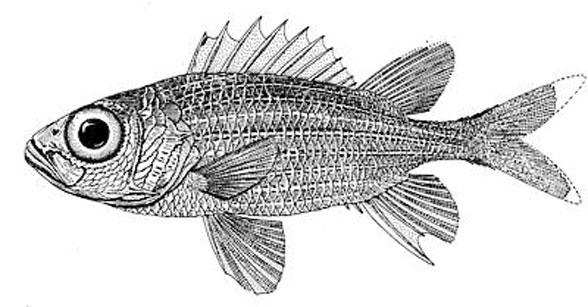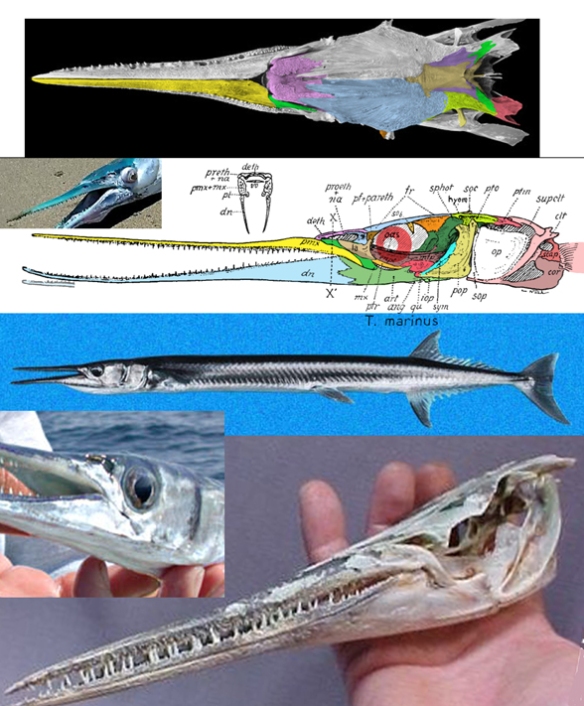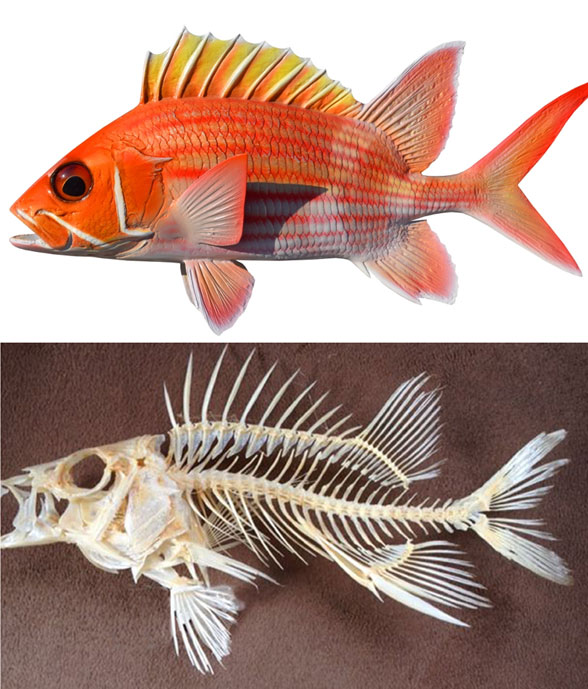Essentially this is part 3
in the search for a flashlightfish (Fig. 1) sister.
Strange animals are fascinating,
but sometimes it takes a more common, mundane taxon to tie them into the vertebrate family tree. Such is the case with Anomalops, the flashlightfish (Fig. 1) we looked at earlier here. Now it has a sister in the large reptile tree (LRT, 1919 taxa): the squirrelfish, Sargocentron (Sargocentron sp. (Fowler 1904, originally Holocentrum leo Cuvier 1829; 15–25cm; Fig. 2). Thirty-three species are known, and they range from reef dwellers to deep-sea taxa.

An untested species, the deep sea squirrelfish Sargocentron bullisi (Fig. 3)
is the one most likely to be related to flashlightfish due to its niche and large eye. According to oceana.org. “Though most groups of deep-sea fishes are descendants of shallow water forms, the flashlight fish seems to represent an opposite colonization.”
Not sure about that. The LRT documents several descents into the depths by surface fish, this one among them. A worthy topic for a future blogpost.

Now the search is on
for a transitional taxon between the squirrelfish and flashlightfish.
>Some corrections of note<
The Triassic needlefish, Saurichthys (Fig. 4) now nests with the extant needlefish (Tylosurus). While obvious in hindsight, imagery and a few mislabeled bones from Gregory 1933 were the cause of the earlier confusion.
Apparently no one else has reported this hypothetical interrelationship. If so please send a citation so I can promote it here.


These are the sort of mistakes
I have made and have found in prior studies (this one from 1933). Experience helps. Freshmen make naive decisions and are prone to believe published material without question. ReptileEvolution.com remains an ongoing online study less prone to mistakes as more and more taxa are added. Let me know of any other errors you see so corrections can be made.
References
Fowler HW 1904. Proc. Acad. Nat. Sci. Philad., 56.
Gregory WK 1933 (1959). Fish skulls. A study of the eovlution of natural mechanisms. American Philosophical Society 23(2):481pp.
Kner R 1868. Über einige Fische aus dem Museum Sitz. B. Akad. Wiss. Wien, Math.-Naturw. Kl., 58 (1), 26.
https://oceana.org/marine-life/ocean-fishes/flashlight-fish
wiki/Splitfin_flashlightfish
wiki/Sargocentron

